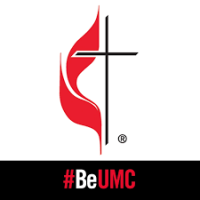An ECM Special Report: Part I

By Walter Hall
August 19, 2011 (La Mesa)--In October, property owners in La Mesa’s downtown district will vote on an initiative with long range consequences for the city and surrounding area. At stake is the charter and character of a Property-based Business Improvement District, commonly abbreviated to PBID.
As with most civic issues, the PBID has defenders and detractors. Some see it as an unwarranted burden on businesses already juggling narrow margins in a fragile economy; others see an innovative civic tool offering a brighter future for those very businesses.
The clash of opposing viewpoints clouds public discourse, throwing it off balance with misinformation and occasionally disinformation. At its worst, it gives harbor to the toxic suggestion that the PBID is merely a smoke and mirrors cover for a hidden agenda driven by ambitious city leaders.
To clear the air, ECM is publishing a three-part series, in a question and answer format. With La Mesa’s unique village ambiance in play, it is in everyone’s interest that PBID issues be seen clearly, discussed in an informed manner and decided wisely.
Question: What is a PBID and what are the boundaries?

Answer: A PBID is a private-public partnership developed, funded, managed and controlled by the property owners in a given district. PBIDs are chartered to operate as 501(c)(6) organizations, such as Chambers of Commerce or Boards of Trade. They enjoy a distinct advantage over government entities – they can raise, or refuse to raise, funds for business development purposes as they alone see fit.
San Diegans benefit from the work of PBID-like organizations every day: in the Gas Lamp, in Little Italy, in Hillcrest, in fact in just about every notable “destination” location in the city. Next door, in El Cajon, property owners just voted to recertify their PBID for the fourth time, by a margin of 71% to 29%.
The geography of the proposed PBID runs approximately from the Civic Center and La Mesa Lumber on the north to Mario’s Restaurant on the east, and from Henry’s supermarket on the south to the commercial center adjacent to the Social Security building on the west. See boundary map on page 9 of the brief at http://www.cityoflamesa.com/DocumentView.aspx?DID=2218
Q: Is the Downtown Streetscape Project held hostage over a PBID? Why do it now?
A: No. There is no d irect connection between the Streetscape Project (largely funded with Recovery Act monies) and the PBID; one is not contingent on the other. But the City Council is reluctant to proceed with full scale implementation of the Streetscape design because neither it nor the La Mesa Village Merchants Association have the means for sustained maintenance of the planned improvements. The choice facing La Mesa is to either reduce the scope of the long-anticipated Streetscape project, or find a viable funding mechanism. A PBID offers the latter solution.
irect connection between the Streetscape Project (largely funded with Recovery Act monies) and the PBID; one is not contingent on the other. But the City Council is reluctant to proceed with full scale implementation of the Streetscape design because neither it nor the La Mesa Village Merchants Association have the means for sustained maintenance of the planned improvements. The choice facing La Mesa is to either reduce the scope of the long-anticipated Streetscape project, or find a viable funding mechanism. A PBID offers the latter solution.
The PBID is not limited to a supporting role in Streetscape. Instead, it would aim to leverage the City’s investment and boost commercial activity downtown. An interoffice memo, prepared by City Manager Dave Witt, describes the proposed PBID as a mechanism that “…could provide a stable and reliable funding source for maintenance activities as well as a range of other programs and business support services, including marketing and promotion…”
Some business owners worry that the PBID will simply allow the City to shift funds to other needs. Not true, say City officials. A PBID will not trigger a diminution of City maintenance and security activity. The PBID does not supplant City obligations – it is a mechanism for extending them.
Why now? With major projects such as Park Station moving forward and decisions on the future of Grossmont Center on the horizon, downtown La Mesa will need to speak with one voice. The PBID could be that voice.
Q: How did the La Mesa PBID proposal get started?

A: With funding approved by the Parking Commission, the City convened a focus group to explore the concept, with the La Mesa Village Merchants Association, in April 2010. The first public meeting was widely advertised and well-attended, with a diverse audience representing various community interests.
The exploratory group issued a call for volunteers to serve on a new PBID Steering Committee, to be established as a private organization, not a sub-unit of any City department. Every name on the volunteer list was added to the Committee roster. Over the summer, the Committee decided unanimously to proceed with a PBID proposal for La Mesa. The City Council voted financial assistance in September.
Those funds allowed for the retention of expert counsel as the Steering Committee morphed into a Formation Committee. Nuts and bolts deliberations began in February 2011, after a public meeting at the Community Center in January. Meetings are announced and open to the public. The agenda and minutes (though much too sparse) for each meeting are published on the City’s website at http://www.cityoflamesa.com/index.aspx?NID=1029
While occasionally contentious, the business of the Committee is transparent to anyone who cares to look. The charge that PBID discussions are veiled in secrecy is simply untrue.
Q: Who participates on the Formation Committee?
A: The 15-member Committee consists of 5 business owners, 7 business and property owners, 1 long-term ground lease holder, 1 resident at large and 1 representative of City owned property.
Each of the meetings of the Formation Committee is open to the public and each agenda allows for public comment and questions. Business owners and interested citizens regularly attend, often registering their concerns.
Q: Will the PBID elbow the Village Merchants Association aside and take over popular events, such as the Car Show and Oktoberfest?

A: No. The vision of the Formation Committee is for the PBID and the Village Merchants Association to “co-exist as complementary organizations.” As a separate entity the PBID will have its own services and programs to conduct.
Q: Is the assessment really just a new tax?
A: No. The City does not control expenditure of PBID funds, nor do these funds replenish city coffers. Assessments and rates are established by the property owners, for the purposes they assign to the organization they control. Funds are collected by the County of San Diego and remitted to the City. The City then passes through the funds to be managed by the 501(c)(6) entity identified in the PBID Management Plan.
Q: Who is assessed?
A: There are 182 parcels in the proposed PBID district, held by 133 property owners. Twenty of these are owned by the City itself. The district is divided into three zones, with the core commercial area bearing the heaviest assessments and the outlying zones lesser amounts.
All property owners, including the City, non-profits, churches and private residences in the district will be subject to assessment by a weighted formula. The same weighting applies to the property owners’ response to the initial petition to create a PBID – giving large holdings greater influence over the outcome, as well as heavier responsibility for funding should the PBID go into operation.
The City has agreed to pay 100% of its assessment. This raises eyebrows. While adding $60,000/year to the PBID budget, that figure represents 16% of the total, giving the City a substantial voice in the decision to proceed.
Churches are slated to get a 50% discount and residential property owners will only be assessed a nominal $25/year.
On the downside, small business owners and merchants rightfully worry that the assessment pass-through, in higher rents, will crush their margins. The actual per parcel figures are still being calculated. As they become known, this series will examine the impact.
What’s the upside? A successful PBID would lift the quality of life, the profitability picture and the basic property values throughout the district.
Q: What’s the status of the PBID initiative today?
A: Petitions of support or “ballots” for the La Mesa PBID are on track to be mailed to district property owners in October. If “yes” ballots representing 50+% of the proposed assessments are returned, the City Council will vote on adoption of a Resolution of Formation to create the PBID. If passed by the Council, the La Mesa PBID will appear on the tax rolls in August, 2012 and the new organization will be funded.
For all the work the volunteer committees have done, the outcome of the PBID story remains uncertain. The most contentious question today: Would a Village PBID be a business builder or a small business killer?
Part 2 in this series will look at both sides. What do you think?























Comments
Walt's Response
Deena and Craig raise the question of the sequencing of the PBID committees over the past 18 months. They have a good point. The text does not make clear that there were two distinct phases of committee work. The first phase was a consultant-led focus group and it was not open to the public, though, as Deena documents, it was the worst kept “secret” in La Mesa. More importantly, both critics fail to mention that focus groups, by definition and method, are never open; they are selected purposefully. An open floor, with no confidentiality, would nullify the group’s value as a sounding board.
When the focus group’s work was complete, the whole process moved to the public domain and the second phase began. Not as reaction, but by design. Was the first phase veiled in secrecy? The answer is clearly no. The process simply followed good business practice, however imperfectly.
Deena and Craig’s criticism of the focus group is misplaced, but it is important. Here’s why. For months now, the PBID issue has generated much more heat than light – burning public trust to no advantage. The indifference to courtesy and basic communication is baffling. Instead of simple, informative updates, the rumor mill was left to churn. Still worse, as Craig points out, the present bewilderment of La Mesa’s landmark churches indicates that the lessons remain unlearned.
It may be of scant practical consequence to the outcome, but the serial missteps in the early months inflicted significant and enduring damage to the perception of fair process as the PBID proposal evolved. In a small city, that is no small matter. And Deena and Craig are right to call it out. But do bungled communications give sufficient reason to condemn the entire enterprise?
Craig protests that the PBID is not democratic. But his complaint conflates civics with business. The PBID, as the name suggests, is a private business organization, not part of the City’s civil service and not funded by the citizenry at large. Business may strive to be fair, but it rarely concerns itself with the requirements of public square democracy. Moreover, Craig ignores that the folks with heavily weighted votes will pay the lion’s share of the freight, each and every year. Do large underwriters of any organization or activity expect to have the same voice as rank and file contributors? Not in our present democracy.
A tax by any other name? Again, no. Craig’s argument is defeated by his own measure. Let’s see whether the self-assessment voted by the property owners in the district really does walk like a duck, talk like a duck, and so forth. Those who will pay the “tax” set the budget that they are willing to fund, direct the line-item expenditures through their own board of directors, hire and fire PBID staff, decide periodically whether they will continue to pay, or not, and remain free to raise additional funds through partnerships, charitable events, direct donations, etc. All while using PBID funds (the alleged “tax”) to promote themselves and their businesses, as they see fit. Does that really describe a “tax”?
Craig has it backwards. The City is not asking the public to pay for “something the City is going to do.” Rather, the property owners in a specific district are pooling their own funds to do things that the City has signaled it can not do. That sure does not waddle, nor does it quack, like just another government-imposed tax. And it’s not.
"Indifference to courtesy and
"Indifference to courtesy and basic communication"? Not quite, Walt. Overt hostility, dishonesty, and personal attacks are more like it. This should make you wonder what they're so defensive about.
But, of course, if you'd been as involved as we have, you wouldn't wonder at all.
And "bungled communications"? Try again. Our opponents didn't err; they withheld, they evaded and denied. This wasn't a mistake. It was a lie.
Your purposely understated, “neutral,” pseudo-diplomatic parlance is misleading. It betrays your lack of experience with La Mesa's politicians. If you knew them like we do, you'd know that these kinds of capers are right up their alley.
You accuse me of conflating civics with business. Why wouldn't I? Public and (big money) private interests are, as you know, are often inextricably intertwined. The PBID is just such a case. It was city's idea; they are not only its most vocal promoter, and they are also single largest property owner--”stakeholder,” as they euphemistically put it--in the game. Yes, the other heavily weighted votes will pay the “lions share,” but they also have the most to gain. They're not doing this for nothing, Walt. What these weighted voted give they'll get back manyfold. What do we get? I'm the last person to begrudge another his success, but when big property owners collude with (ostensibly) popular government to create policies that profit the former at our expense, I say no. It isn't right. Finally, as I have pointed out before, the Mayor has stacked the deck with sympathetic interests--the kind that virtually ensure the city's preordained plans. This was confirmed by one committee member told me that this thing was “a done deal” from the start. It's a farce, Walt. Look at the steering committee!...the people involved. Think they were invited for a real critical evaluation of the project?
And while you continue to talk in generic terms about the choice for this fiasco being in the hands of "those who will pay the tax," the majority of us—the struggling businessmen--are (as you know) excluded from this process. The decision lies the hands of only a few--the City of La Mesa foremost among them, and deals have been made with the others who will tow the party line for their own benefit. The rest of us are on our own.
I'm sorry you're not with us.
Are you switching the story around?
Let's go back to the February 2011 PBID meeting at the La Mesa Community Center, where the city staff presented that all previous PBID meetings were open to the public. When it was disclosed that I had been excluded, the city couldn't answer for that and said they would need to launch an investigation.
Now YOU are claiming that the first PBID meetings were not suppose to be open to the public. Where are you getting that information?
No, no switch.
No switch here at all. And no need to claim anything. The original article specifically stated that the Parking Commission launched a focus group, by definition a representative and restricted entity. But as you pointed out, the text did not make it sufficiently clear that the PBID process over the past year involved two distinct groups or committees: the original focus group and the subsequent formation committee.
My reply to your comment agreed with that point and sought to clarify that there were indeed, as you wrote, “two separate series of meetings” and that the first of them, the focus group, followed the commonly understood methodology for such activity. According to your comment, Chris Gonzalez laid out the essential elements of that methodology in his conversation with you - so you were apparently aware of them last year.
My note contains no new claim. It simply repeats what Mr. Gonzalez already told you – that the first group was pre-selected to create a cross-section of the district’s demographics, that participation was therefore by invitation, and as your participating friend explained, it was hoped that the proceedings of the group would be held in confidence until their review of redevelopment alternatives was concluded. All of these are standard practice for a focus group and all of them are found in your initial comment.
Again, the PBID proposal raises serious issues, all of considerable consequence for La Mesa's downtown district, but charges of unwarranted, underhanded secrecy are not among them.
I suspect – but cannot prove – that some wit anointed the focus group with the puffed up title of “steering committee” thus foolishly leading the community to believe it was quite a different animal – and seriously wrong-footing Mr. Gonzalez in the process. Sadly enough, a little sensible communication could have ended the uproar over “secret meetings” many months ago.
Sorry, but at the La Mesa
Sorry, but at the La Mesa Community Center meeting the city staff said that those first meetings, in which I was excluded, WERE PUBLIC MEETINGS, that they have been open, and there was nothing secret about them.
La Mesa PBID
Thanks for the article, here's some clarification:
How did the PBID proposal start?
When the Street Scape Improvement Project was designed the city realized it couldn't afford to maintain it. Several times we have been told that a 'mechanism' must be in place to maintain the street scape. So the PBID was initiated by the city to pay for it. Although it has been said that the two - the Street Scape and PBID - are not connected, there is a need to maintain the street scape and that's how the PBID talks began.
The La Mesa Village Merchants Association has remained silent regarding this issue. LMVMA was not represented at the first meeting, nor at any subsequent meetings. Those LMVMA members actively serving on the committee have repeatedly stated they are representing themselves and no one else.
There has been two PBID groups with different people, and two separate series of meetings and your article is blurring the two groups.
The first meeting (Group A) in the April 2010 time-frame was NOT publicly advertised nor was it a public meeting. It was held by invitation only. The City of La Mesa hand selected who was to attend that meeting. I was contacted by an invited merchant to see if I was planning on going, but I had not heard of the meeting.
I immediately called Chris Gonzales in La Mesa's Community Development Department to find out more information. I was told:
* I was not invited to the meeting
* the meeting was by invitation only
* there was representation for business owners, property owners, and all the various types of businesses within the village.
This Group A met for several months in 2010, with the City Council taking action in September 2010. This Group A was secretive, no information was disclosed other than what we heard on the street. When I asked attendees about the meetings they were not allowed to talk.
The first PUBLIC meeting that everyone was invited to was about 8 months later, held at the beginning of 2011. That ONE meeting was advertised with signs posted on major streets, notices were hand delivered to all village merchants. The meeting was held at the La Mesa Community Center. I would estimate that 60 people attended - but not many village property and business owners. Subsequent meetings with the new group, Group B, were not advertised. You had to check the city website, or be in email contact with the committee to know when and where the public meetings were being held.
PBID not a tax? Well it's an increase to our Property Tax Bill, call it what you will.
With regard to the voting....a majority vote will consist of 50+% of votes returned. It is not 50+% of pettions sent out.
Still not clear is how the city council will vote if 10 property owner votes equal 50+% and 123 property owners don't have a voice.
Though admirable in his
Though admirable in his record straightening intent, Walter both commits and omits (inadvertently, I believe) more than a little "misinformation" and/or "disinformation" himself.
Take, for example, the question of whether or not the city's "streetscape" project is or was ever held hostage to the adoption of the PBID. In fact, Mayor Madrid and his cronies did, on more than one occasion, vocally threaten that unless the PBID succeeded, there would be no “streetscape” improvements.
And though Walt is right about the PBID being the city's idea, he fails to mention Mayor Madrid's (typical) way of stacking the steering committee deck with his own city sycophants; many of them the same two-legged rubber-stamps he has used in the past. But about the secrecy of the meetings, Walt is just flat wrong. They may not be secret anymore, but that is due solely to our demand that they open up. Prior to that, meetings were help unannounced on holidays, and access to meetings was denied to the general public. In fact, to this day, the larger part of those affected (for example, churches and residents) are still in the dark about the city's ambitions. Recently, the folks at La Mesa First United Methodist confessed that they had no idea they were to be "assessed"--i.e., taxed. (Churches, as Walt points out, get a 50% discount; but just wait until they find out that their school will be "assessed" at the same 100% rate as any other business!)
Which brings me to the next point. Is the PBID just another tax? Walt says no, and technically he's right. But I say yes, and essentially I am right. He notes that "The City does not control expenditure of PBID funds, nor do these funds replenish city coffers." Okay. So what? Basically, the city is asking the public to pay for something that it (the city) is going to do. Sure sounds like a tax to me. And if they are successful, those property owners who oppose the PBID will have no choice but to pay. Let's be honest: if it walks like a duck, and talks like a duck...
But perhaps the most discomfiting feature of the PBID is its radically undemocratic nature. As I have written *elsewhere:
"According to PBID rules, not all voters are created equal. All properties are to be “assessed” according to how much they will contribute to the city coffers; and since the assessment is based on physical dimensions, the largest properties in the PBID zone—La Mesa Lumber, Henry's Market, the Vons shopping center, and, of course, the city civic center itself—will all have wildly disproportionate influences over the PBID proceedings; so much, in fact, that the “votes” of the majority of smaller property owners count for virtually nothing—even in combination! It's safe to say that never in East County history has the fate of the many been so shamelessly placed in the hands of a few. So much for the “voluntary nature” of this tax! So much for the democratic process!"
For years our politicians have both complained about the village as it stands, and talked about their desire to redesign it. Now they have the means. Property owners will pass the costs of their PBID assessments along to to their tenants, making rent difficult or impossible for many of the less lucrative ventures. And while places like bookstores and antique shops may not be important to city hall, (I haven't sold a book to anyone there in nine years) that doesn't mean that our fellow citizens share their indifference to our charming diversity.
(*Please see the full piece @ http://lamesa.patch.com/articles/downtown-village-pbid-ruthless-designs-...)